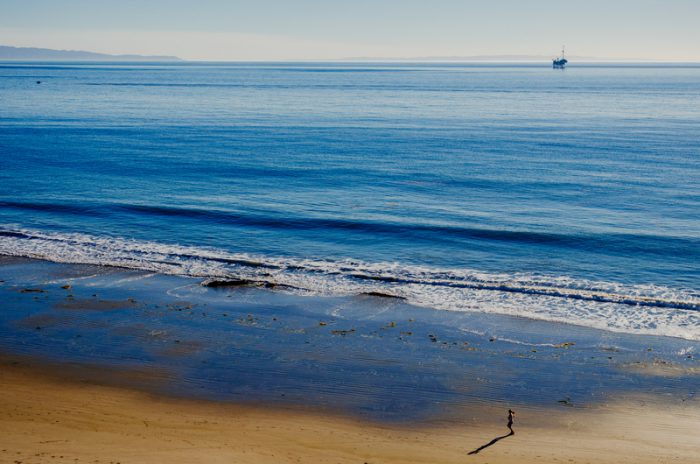The news on Monday morning sounded good. After nine days of closures, world famous Huntington Beach—also known as Surf City USA—was back open to the public.
But underneath the welcome news was a lot of concern.
The reason for the closures was an oil spill, one of the worst in California history. Somewhere between 95,000 litres (25,000 gallons) and up to 500,000 liters (132,000 gallons) of crude (raw or unprocessed) oil leaked into the sea after an underwater pipeline broke. The pipeline is connected to offshore oil rigs—these are drilling platforms that are used as bases to access oil that is buried under the ocean floor.
Though the initial cleanup has been a success, it isn't over. Oil will remain in the ecosystem for months and even years. And now strong questions about how this happened—and what the future should look like—are being asked.
What happened?
Crews work to clean a section of the shoreline in Huntington Beach, California. (Getty Embed)
Signs of oil in the water were first noticed on the evening of October 1. This is not that unusual—small amounts of oil can come from a number of sources and not be a major cause for alarm. But very early the next morning, a gas company called Beta Offshore received a low pressure alarm on a pipeline. This is a warning of a possible break in the pipe.
By sunrise, the pipeline had been shut down. Later in the morning, an oil spill was confirmed. Over the next couple days, many beaches were closed and cleanup teams were mobilized. They set about cleaning the beaches, rescuing animals, and trying to contain and remove oil from the open sea.
Where is the pipeline and who operates it?
The pipeline carries oil from these two oil rigs, nicknamed Ellen and Elly. They are owned by Amplify Energy Corp. (Getty Embed)
The pipeline extends from along the ocean floor off the California coast, near the Los Angeles area. It carries crude oil from offshore rigs to the mainland. The company than runs it—Beta Offshore—is a subsidiary (or smaller company) owned by Amplify Energy Corporation. Based in Houston, Texas, Amplify owns around 2500 natural gas and oil wells across the southern and western US.
How did it happen?
It is possible that an anchor from a barge like this one struck and damaged the pipeline. (Getty Embed)
This is still being investigated. At first, it was thought that the pipeline broke due to age. The pipe itself is from 1980. Though it is inspected regularly for damage—including earlier this year—it is over 40 years old.
But after divers found and inspected the break, they have a new theory. There is a foot-long gash in the pipe and the pipeline itself has been moved about 30 metres (100 feet) away from its normal position. It is likely that the hole was caused by the pipeline being hit and dragged by an enormous anchor on a shipping vessel. The area around Los Angeles is very busy with ocean boats carrying goods from around the world—these boats often have to anchor offshore while they wait to be allowed into port.
What does the future hold?
Cleaning the water and shore of oil takes time and is very difficult. It can't remove all contamination. (Getty Embed)
On Monday, the California Justice Department announced that it was going to fully investigate the spill. They will try to determine the cause, decide whether safety precautions were followed properly, and offer advice to avoid future spills.
According to Rob Bonta, the state's attorney general, "The oil spill off the coast of Huntington Beach is an environmental disaster with far-reaching consequences for our fish and wildlife, for our communities, and for our economy."
Though the beaches are open again, many animals have already died as a result of the spill. There is still a lot of oil in the water. In the past, it has taken years—even decades—to fully understand the effect of an oil spill of this size. Environmental advocates are saying that disasters like this are extra proof that we need to change how we get our energy.
 The California coastline has a number of offshore oil rigs close by beaches. (ID 76419175 © Stevehymon | Dreamstime.com)
The California coastline has a number of offshore oil rigs close by beaches. (ID 76419175 © Stevehymon | Dreamstime.com)









